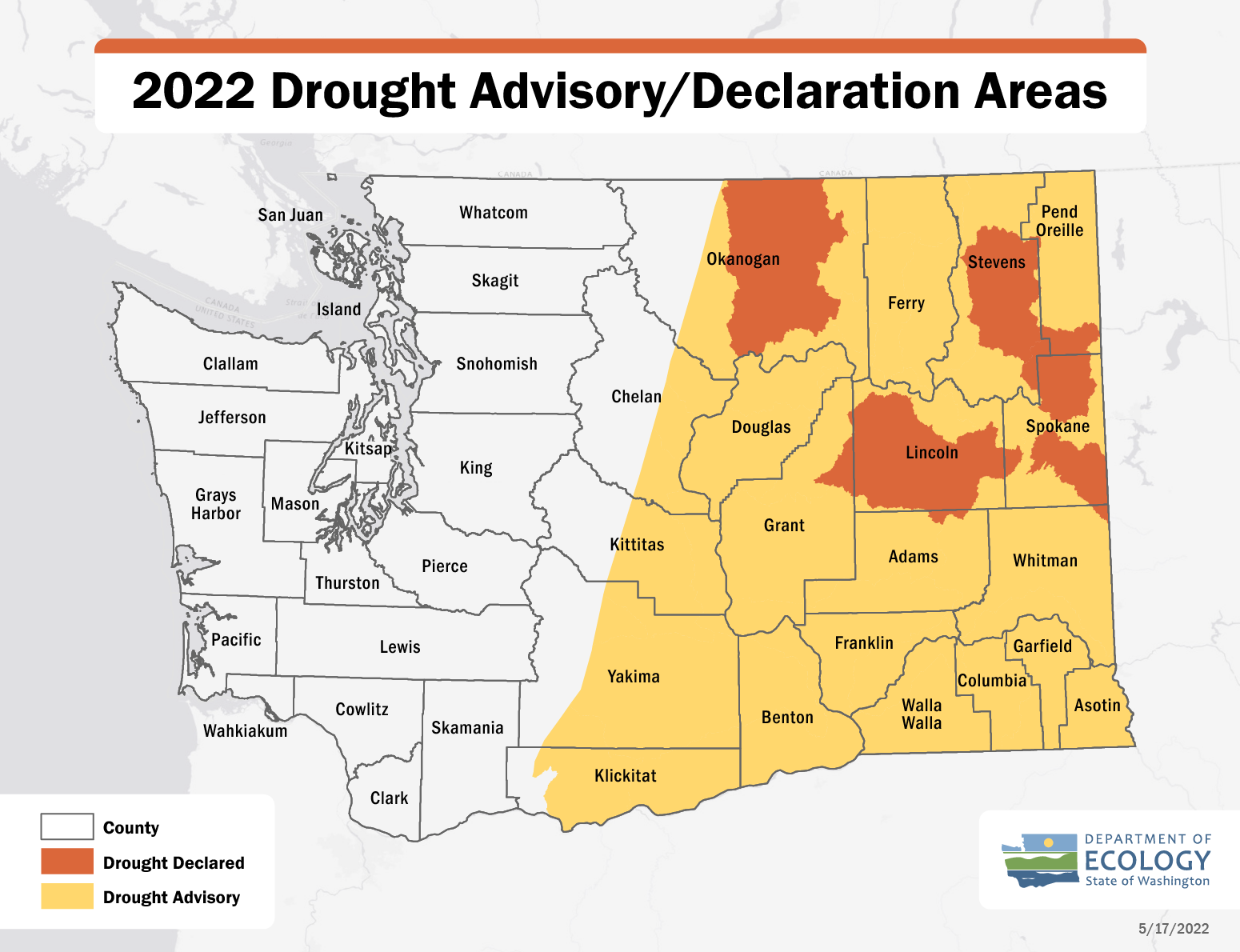A cool and wet spring brought relief to much of Washington following the drought of 2021, but in a few parts of eastern Washington, the drought’s effects have lingered. Those continuing concerns led the Washington Department of Ecology to issue an amended drought declaration for watersheds in eight eastern Washington counties that will go into effect June 1.
Under the amended declaration, five watersheds spanning parts of Spokane, Lincoln, Grant, Adams, Whitman, Stevens, Okanogan and Pend Oreille counties will remain in “drought emergency” status.
All other counties east of the Cascade Mountains will be downgraded to “drought advisory” status. Counties west of the Cascade Mountains no longer fall under drought conditions.
The spring of 2021 was the second-driest on record, and then an unprecedented late-June heatwave smashed temperature records across the state. In response, Ecology issued an emergency drought declaration in July 2021 covering 96 percent of the state. Only Seattle, Everett and Tacoma – cities with ample water storage – escaped the designation.
That declaration was set to expire June 1, 2022. Ecology’s new amended declaration extends that to June 1, 2023 – but only for about 9% of the state.
According to state law, a drought can be declared when the water supply in an area is below 75% of normal and there is an expectation of undue hardship.
The areas still under an emergency drought declaration simply haven’t gotten enough precipitation to recover from last year’s hardships, said Ecology drought coordinator Jeff Marti.
“2021 saw extreme temperatures and near record-low precipitation across much of the state,” Marti said. “In 2022, conditions have been much more normal, but we’re still trying to make up a deficit in some places. Extending the drought declaration for these areas will give us more tools to manage water supplies and respond to changing conditions.”
Impacts from last year’s drought that are expected to continue through this summer include low soil moisture, dried-out ponds, earlier-than-normal curtailments for irrigators in Colville, the Little Spokane River and Hangman Creek, and low reservoir storage in Okanogan County.
Declaring a drought emergency allows Ecology to process emergency water rights permits and expedite requests for emergency water right transfers.
Irrigators affected by drought may qualify for emergency water right permits or expedited water right transfers. They might also be able to locate and lease a water right from a nearby or upstream water right holder. Ecology’s water right search tool can help identify options.
Other state agencies also have resources for those affected by drought:
- For drinking water emergencies due to the drought, please contact the Washington Department of Health’s Office of Drinkwater Water Hotline at 1-877-481-4901.
- For fish health emergencies due to the drought, please contact the Washington Department of Fish and Wildlife's Fish Program at 360-902-2700.
- For agricultural emergencies (potential for loss of life of agricultural animals or crops) due to the drought, please contact the Washington State Conservation Commission at 509-385-7509.


